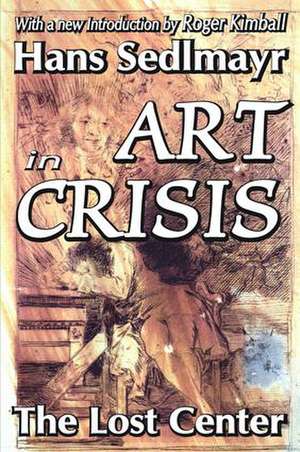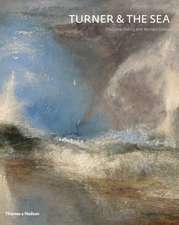Art in Crisis: The Lost Center
Autor Hans Sedlmayren Limba Engleză Hardback – 2 oct 2017
| Toate formatele și edițiile | Preț | Express |
|---|---|---|
| Paperback (1) | 437.13 lei 6-8 săpt. | |
| Taylor & Francis – 15 noi 2006 | 437.13 lei 6-8 săpt. | |
| Hardback (1) | 1114.40 lei 6-8 săpt. | |
| Taylor & Francis – 2 oct 2017 | 1114.40 lei 6-8 săpt. |
Preț: 1114.40 lei
Preț vechi: 1359.02 lei
-18% Nou
Puncte Express: 1672
Preț estimativ în valută:
213.27€ • 220.32$ • 177.49£
213.27€ • 220.32$ • 177.49£
Carte tipărită la comandă
Livrare economică 25 martie-08 aprilie
Preluare comenzi: 021 569.72.76
Specificații
ISBN-13: 9781138518957
ISBN-10: 1138518956
Pagini: 289
Dimensiuni: 152 x 229 mm
Greutate: 0.6 kg
Ediția:1
Editura: Taylor & Francis
Colecția Routledge
Locul publicării:Oxford, United Kingdom
ISBN-10: 1138518956
Pagini: 289
Dimensiuni: 152 x 229 mm
Greutate: 0.6 kg
Ediția:1
Editura: Taylor & Francis
Colecția Routledge
Locul publicării:Oxford, United Kingdom
Cuprins
1: Symptoms; I: New Master Problems; II: The Search For A Lost Style; III: The Isolation Of The Arts; IV: The Attack on Architecture; V: The Significance Of The Fragment; VI: Chaos Unleashed; Part Two : Diagnosis And Progress Of The Disease; VII: ‘Analogia Morbi’; VIII: ‘Autonomous’ Man; IX: At The Origins Of The Present; X: Precursors of Modern Art; XI: The Three Artistic Revolutions of the Eighteenth Century; XII: From The Liberation Of Art To The Negation Of Art; III: Towards a Prognosis and a Final Judgement; XIII: An Evaluation of the Epoch; XIV: Towards an Evaluation of Modern art; XV: Modern art as the Fourth Phase of Western art; XVI: Today as the Turning Point in the History of Man; XVII: Prognosis; Postscript
Descriere
The history of art from the early nineteenth century on- ward is commonly viewed as a succession of conflicts between innovatory and established styles that culminated in the formalism and aesthetic autonomy of high modernism










